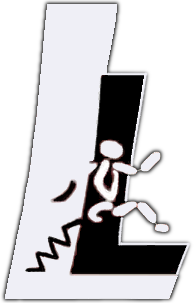| Both sides previous revision
Previous revision
Next revision
|
Previous revision
Next revision
Both sides next revision
|
publications:publications_podcasts_pick_of_the_month [2018/06/05 09:28]
Maziar Sharbafi |
publications:publications_podcasts_pick_of_the_month [2019/02/18 11:28]
Maziar Sharbafi |
| ====== Previous News ====== | ====== Previous News ====== |
| | |
| | ==== Can exoskeletons be helpful to improve daily mobility? ==== |
| | |
| | {{ :exo.jpg?nolink&200|}} |
| | |
| | A recently in the Journal of NeuroEngineering and Rehabilitation published article with the title [[https://doi.org/10.1186/s12984-018-0458-8|Mobility related physical and functional losses due to aging and disease - a motivation for lower limb exoskeletonstargets]] adresses the topic. |
| | |
| | If you want to know more about it have a look at the following abstract or visit [[https://doi.org/10.1186/s12984-018-0458-8|JNER]] for the whole publication. |
| | |
| | **Abstract:** |
| | |
| | **Background:** Physical and functional losses due to aging and diseases decrease human mobility, independence, and quality of life. This study is aimed at summarizing and quantifying these losses in order to motivate solutions to overcome them with a special focus on the possibilities by using lower limb exoskeletons. |
| | |
| | **Methods:** A narrative literature review was performed to determine a broad range of mobility-related physical and functional measures that are affected by aging and selected cardiovascular, respiratory, musculoskeletal, and neurological diseases. |
| | |
| | **Results:** The study identified that decreases in limb maximum muscle force and power (33% and 49%, respectively, |
| | 25–75 yrs) and in maximum oxygen consumption (40%, 20–80 yrs) occur for older adults compared to young adults. |
| | Reaction times more than double (18–90 yrs) and losses in the visual, vestibular, and somatosensory systems were |
| | reported. Additionally, we found decreases in steps per day (75%, 60–85 yrs), maximum walking speed (24%, 25–75 yrs), and maximum six-minute and self-selected walking speed (38% and 21%, respectively, 20–85 yrs), while we found increases in the number of falls relative to the number of steps per day (800%), injuries due to falls (472%, 30–90 yrs) and deaths caused by fall (4000%, 65–90 yrs). Measures were identified to be worse for individuals with |
| | impaired mobility. Additional detrimental effects identified for them were the loss of upright standing and locomotion, freezing in movement, joint stress, pain, and changes in gait patterns. |
| | |
| | **Discussion:** This review shows that aging and chronic conditions result in wide-ranging losses in physical and sensory capabilities. While the impact of these losses are relatively modest for level walking, they become limiting during more demanding tasks such as walking on inclined ground, climbing stairs, or walking over longer periods, and especially when coupled with a debilitating disease. As the physical and functional parameters are closely related, |
| | we believe that lost functional capabilities can be indirectly improved by training of the physical capabilities. However, assistive devices can supplement the lost functional capabilities directly by compensating for losses with propulsion, weight support, and balance support. |
| | |
| | **Conclusions:** Exoskeletons are a new generation of assistive devices that have the potential to provide both, training capabilities and functional compensation, to enhance human mobility. |
| | |
| | \\ |
| | Click [[https://doi.org/10.1186/s12984-018-0458-8|JNER]] for the whole article. |
| | |
| | \\ |
| | ==== Workshop in BioRob 2018: Novel bioinspired actuator designs for robotics (BioAct) ==== |
| | |
| | {{ :robokids-bleu-1.jpg?400|}} |
| | |
| | Together with colleagues from Vrije Universiteit Brussel and Universität Stuttgart, we have organized a workshop in [[https://www.biorob2018.org/|BioRob 2018 Conference]] on August 26th. This workshop is arranged through goals of [[projects:projects_epa| EPA project]] and [[https://pearres.wordpress.com/|PEAR]]. |
| | |
| | **Abstract:** Through evolution, muscles have been optimized to generate and fine-tune motions. They provide highly versatile force sources, i.e., they have an extremely low impedance (perfectly back-drivable), provide functional damping and low stiction. Although their bandwidth is limited, it is sufficient for even highly dynamic human/animal locomotion. Some biological principles can be applied to robotics, e.g., the addition of compliance to traditional rigid actuators. Elastic actuators can increase safety in human-robot interaction, improve energy efficiency, reduce impacts and augment performance in dynamic tasks. While such actuators have been researched extensively over the past two decades, there are still various open questions. These relate to the fundamental properties mentioned above, but also to their implementation and control as well as the integration of their hard- and software. Elastic actuators have been applied in wearable robotic devices, rehabilitation robots and humanoid robots. In the last years, bio-inspired approaches have brought the capabilities of elastic actuators closer to those of the human muscle, e.g., by introducing redundancy to mimic the muscle fibre recruitment. Another level of redundancy can be achieved by employing mono- and bi-articular actuators to achieve designs with increased robustness and simplified control. We plan to divide the workshop in four sessions comprising three talks of around 20 minutes. At the end of each second session, there will be an extensive discussion (around 45 minutes) between participants and speakers of the two sessions. There will be live demonstrations during the talks and in the subsequent discussion. Besides the invited talks and discussion, the organizers will call for posters to be presented at the workshop. \\ |
| | |
| | \\ |
| | Click [[Home:BioAct|BioAct Workshop]] for more information. |
| | |
| | |
| | \\ |
| |
| ==== Haptic ankle manipulator – Design & Development ==== | ==== Haptic ankle manipulator – Design & Development ==== |




